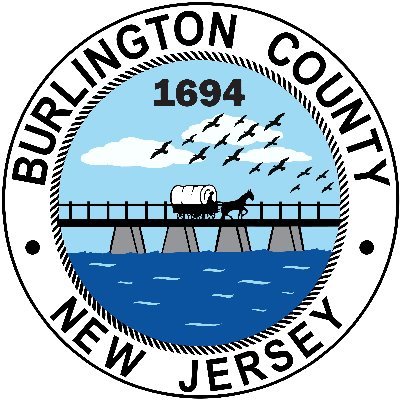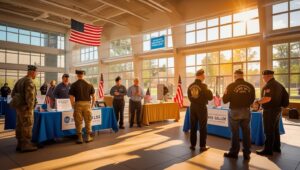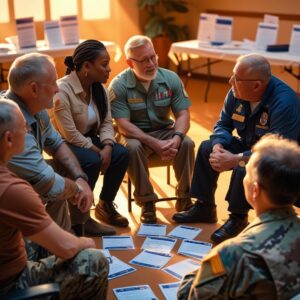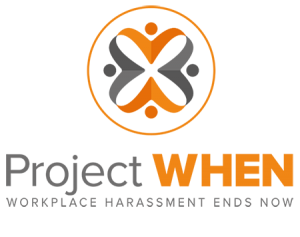From Outreach to Impact: How Burlington County, New Jersey’s Veterans Expo Built a Model for Local Veteran Engagement
 In Mount Laurel, New Jersey, a single event demonstrated how strategic communication and community-centered design can make a profound difference in the lives of those who served. Held at Rowan College at Burlington County (RCBC), the Burlington County Veterans Expo was more than just a service fair—it was a local government-led initiative rooted in respect, access, and informed connection.
In Mount Laurel, New Jersey, a single event demonstrated how strategic communication and community-centered design can make a profound difference in the lives of those who served. Held at Rowan College at Burlington County (RCBC), the Burlington County Veterans Expo was more than just a service fair—it was a local government-led initiative rooted in respect, access, and informed connection.
Organized by the Burlington County Sheriff’s Office in collaboration with the New Jersey Department of Military and Veterans Affairs (DMAVA), the Expo exemplified how local agencies can meet veterans where they are—physically, emotionally, and bureaucratically. This case study explores how the Expo served as a communication-rich intervention that addressed common barriers veterans face when accessing support.
The Initiative: Burlington County Veterans Expo
Too often, veterans find themselves navigating fragmented systems, unclear information, and a lack of personal connection when seeking benefits. The Burlington County Veterans Expo was designed to address these issues head-on. It brought together a wide array of federal, state, and local partners, nonprofits, and veteran service organizations—all under one roof—to create a seamless, accessible, and dignified experience for veterans and their families.
Rather than requiring veterans to travel from office to office or comb through complex websites, the County reversed the equation: the services came to the veterans.
A Communication-Centered Approach to Veteran Support
At its core, the Expo was a communications success. It recognized that providing a service is only effective if it is clearly explained, accessible, and reinforced by trust. Burlington County’s approach was guided by four key principles:
- Clarity – Make benefits and services easy to understand.
- Access – Reduce logistical and emotional barriers.
- Trust – Use community institutions and personal interaction to build credibility.
- Integration – Deliver services holistically, not in silos.
Key Program Components
1. Veteran ID Cards: Tangible Recognition and Practical Utility
The Burlington County Sheriff’s Office issued free veteran ID cards to honorably discharged veterans, a gesture both symbolic and practical. These cards are often required to obtain discounts, access municipal veteran services, or confirm veteran status without carrying DD-214 forms.
Why It Works:
- Psychological Empowerment: Veterans left with something in hand—a physical acknowledgment of their service.
- Ease of Access: On-site processing cut down wait times and removed paperwork barriers.
- Trust in Authority: IDs issued by the Sheriff’s Office conveyed local legitimacy and respect.
2. On-Site Medical Screenings: Preventive Care Made Accessible
Veterans received free screenings for common conditions such as high blood pressure, glucose levels, and more. These screenings were provided by medical partners and designed to encourage early detection and promote health literacy.
Why It Works:
- Location Convenience: Providing screenings on-site reduced the transportation and scheduling barriers many veterans face.
- Immediate Value: Attendees left not just with information, but with real health insights.
- Health Engagement Gateway: The screenings served as an entry point for broader conversations about veteran health benefits and preventative care.
3. Personalized Information on Federal and State Benefits
Representatives from the VA, DMAVA, and other government offices were available to explain veteran benefits, answer questions, and offer printed materials tailored to different needs—disability compensation, housing, healthcare, and education, among others.
Why It Works:
- Demystifying the System: The benefits landscape is notoriously complex. Having real people explain it face-to-face made a significant difference.
- Tailored Guidance: Rather than general brochures, attendees received answers specific to their situation.
- Lowering Bureaucratic Intimidation: Personal interaction softens the formality of government processes and empowers veterans to ask more questions.
4. Resource Connections with Local Support Organizations
Over a dozen local service providers were present, including mental health counselors, legal aid organizations, housing support programs, job training providers, and the Burlington County Division of Military and Veterans Services. This networked presence emphasized holistic well-being.
Why It Works:
- Interagency Collaboration: Instead of isolated service silos, the Expo provided a fully networked environment for wraparound support.
- Immediate Referrals: Veterans were able to sign up or schedule follow-ups on the spot.
- Whole-Person Support: Services acknowledged the full range of veteran experiences—emotional, legal, medical, and social.
5. Human-Centered Design and a Welcoming Atmosphere
The Expo’s success was not just in the services offered—it was in how those services were delivered. Staff were trained in veteran sensitivity, signage was clear, and the environment felt more like a community gathering than a bureaucratic appointment.
Why It Works:
- Veteran-Sensitive Environment: Attendees were welcomed, not processed. This tone matters—especially for those disillusioned by past interactions with formal systems.
- Navigation Support: Volunteers and staff were on hand to help direct foot traffic, explain booth offerings, and support those with mobility issues.
- Emotional Validation: Veterans weren’t just handed a flyer—they were heard, acknowledged, and guided.
Broader Communication Impacts and Lasting Value
While the Burlington County Veterans Expo was a one-day event, its strategic communication approach generated ripple effects that extended well beyond the campus grounds at Rowan College at Burlington County. The Expo functioned as a catalyst—stimulating systems improvement, building relationships, and setting the stage for sustained outreach.
Improved Awareness and Health Literacy
Many veterans and their families reported discovering new benefits and services for the first time—especially in areas like mental health counseling, legal aid, housing support, and medical screening access. By demystifying the landscape of available resources, the Expo empowered attendees with the knowledge to act.
Stronger Community Ties and Interagency Collaboration
The Expo served as a rare physical convergence of public safety agencies, veteran nonprofits, medical providers, county departments, and state/federal representatives. This facilitated real-time networking, shared learning, and built trust between organizations that may otherwise operate in parallel silos.
Ongoing Outreach and Follow-Up Capacity
Rather than treating the event as a one-time transaction, Burlington County designed it as the beginning of an ongoing engagement loop. Veterans were encouraged to sign up for mailing lists, schedule benefit consultations, or request callbacks. Staff also collected feedback for future improvement.
Normalizing Veteran Conversations in Civic Life
The Expo helped foster a culture in which veteran needs are not seen as “special cases,” but as integral parts of local government service. It positioned veteran issues as mainstream civic priorities—worthy of time, space, and coordination.
 Communication Lessons from Burlington County
Communication Lessons from Burlington County
The Burlington County Veterans Expo offers actionable communication insights that can inform other public engagement strategies—especially those aimed at high-need, high-integrity populations.
1. Bring the System to the People
Hosting a centralized event allowed veterans to access information and services without navigating multiple government buildings or online portals. The physical location—on a college campus—signaled accessibility and public belonging.
Additional Insight:
Public spaces like colleges, libraries, or community centers can reduce psychological barriers that some veterans feel when approaching official government buildings.
2. Create Trust Through Personal Contact
Uniformed officers, benefit counselors, nurses, and nonprofit staff weren’t just present—they were accessible, warm, and prepared to listen. Veterans were treated as individuals, not case numbers.
Additional Insight:
Peer-to-peer interactions—such as fellow veterans staffing booths or giving testimonials—can add authenticity and strengthen rapport. Trust grows when people see themselves in the messenger.
3. Bridge Complexity with Clarity
The benefit system is complicated, but Burlington County simplified the experience with plain-language flyers, one-on-one walkthroughs, and immediate next steps (e.g., “Here’s who to call Monday”).
Additional Insight:
Effective communication also includes follow-through clarity: what happens after the event? Attendees were given instructions and contacts so that services didn’t end at the Expo.
4. Collaborate Across Sectors
Veteran well-being touches healthcare, housing, employment, mental health, and justice. Burlington County’s success came from uniting these sectors under one event infrastructure.
Additional Insight:
Shared intake forms, coordinated follow-up protocols, and joint debriefs after the event can further institutionalize this collaboration—making future events even more seamless.
5. Design for Belonging, Not Just Attendance
From signage to seating, from how questions were answered to how names were remembered—the Expo was designed not just for efficiency, but for emotional safety and respect.
Additional Insight:
Small touches—thank-you cards for service, quiet rooms for overstimulated attendees, staff trained in trauma-informed language—send powerful messages that veterans are valued, not just counted.
6. Use Events as Feedback Loops
Rather than just disseminating information, the Expo functioned as a listening post. Veterans shared stories, frustrations, and unmet needs that can now inform future outreach and policy.
Additional Insight:
A short exit survey or feedback wall can transform events from static service delivery into evolving community insight platforms—shaping programs around real experiences.
7. Make the Invisible Visible
Many veterans who attended had previously gone unnoticed by formal support systems. By holding a highly visible, well-promoted event, the County made the invisible visible—welcoming back veterans who hadn’t yet engaged with services.
Additional Insight:
Marketing matters. Promotional partnerships with local VFW halls, churches, employers, and social media groups help reach those who aren’t already “in the system.”
Conclusion: From Respectful Communication to Lifelong Impact
The Burlington County Veterans Expo exemplifies how local government can shift from being a passive provider to an active partner in veteran well-being. By combining thoughtful planning, collaborative delivery, and a deeply respectful communication strategy, the County delivered more than just services—it delivered dignity, empowerment, and connection.
As public agencies across the country seek to better serve veterans, Burlington County offers a replicable model. Don’t just inform—engage. Don’t just serve—connect. And most importantly, make communication central to every step of the journey.
Ready to Elevate Your Agency’s Public Communication?
We understand the unique challenges state and local government agencies face—from complex issues to diverse community needs. Our comprehensive approach can help you transform the way you connect with constituents, improve transparency, and highlight the valuable work your agency does every day.
Interested in learning more? Reach out to us today for a consultation. We’d love to discuss how our services can support your goals and help you build lasting trust with the communities you serve.



 Communication Lessons from Burlington County
Communication Lessons from Burlington County

